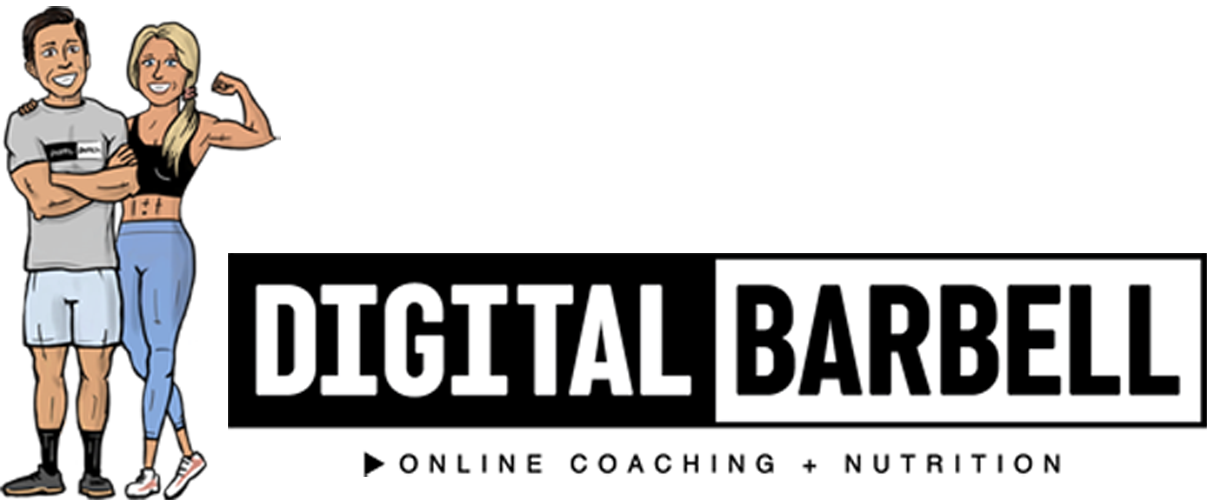Is It Okay to Drink Diet Soda—and Other Fitness Questions You’re Probably Wondering About
We get a lot of questions from our Digital Barbell clients and friends on Instagram and YouTube channel. Especially ones that circle around guilt, confusion, and that sneaky feeling you might be doing something “wrong.”
Let’s set the record straight on four common topics today:
Diet soda
Cardio
Bodyweight training
Changing up your workouts
Let’s get into it.
1. Is It Okay to Drink Diet Soda?
Short answer: Yes, in moderation.
Long answer: Still yes—and here’s why.
Despite all the fear-mongering online, there’s no evidence that moderate diet soda consumption leads to weight gain or negative health outcomes.
It doesn’t spike insulin.
It doesn’t mess with your metabolism.
It doesn’t automatically make you crave sugar or overeat.
In fact, if you swap two full-sugar sodas per day for diet, you’d be saving enough calories to start losing weight—without changing anything else.
So what about aspartame?
Let’s break that down:
Aspartame is the most heavily studied artificial sweetener in the world.
The FDA’s acceptable daily intake (ADI) is 50 mg/kg of bodyweight.
The EFSA (Europe’s version of the FDA) says 40 mg/kg.
For a 150-lb (68 kg) adult, that’s 3,000–3,400 mg per day.
A 12 oz Diet Coke contains about 180 mg of aspartame.
You’d need to drink 18–19 cans per day to hit the upper limit.
That’s over two gallons. Per day.
And even then, the ADI includes a 100x safety margin.
So yes—drink the diet soda if you enjoy it. Just don’t make it your only beverage.
2. How Much Cardio Do You Recommend—and What’s the Best Kind?
The best kind of cardio is… the kind you’ll actually do.
According to the CDC and WHO, the goal is:
150 minutes/week of moderate intensity
OR75 minutes/week of vigorous intensity
ORA combination of both
That breaks down to about 20–30 minutes, 3–5x per week.
Why should you do cardio at all?
It supports heart health, endurance, and recovery
It helps regulate mood, energy, and stress via endorphins and dopamine
It boosts your daily calorie burn and keeps you active outside the gym
How we program cardio at Digital Barbell:
Finishers: 2–3x/week, short high-intensity bursts at the end of strength workouts
Longer low-intensity sessions: Walking, biking, or other steady movement
Daily steps: We encourage everyone to build movement into their everyday lives
So no—you don’t have to become a runner. But yes—you should move your body consistently.
You can try a free 5-Week training program HERE.
3. Are Bodyweight Workouts Worth It If You Can’t Lift Weights?
Absolutely. The key isn’t always what you’re doing—it’s that you’re doing something.
Whether you’re traveling, don’t have equipment, or just can’t make it to the gym—bodyweight workouts keep your routine and momentum alive.
To maintain strength and muscle, you need two things:
A stimulus (a challenge)
Enough protein
You can definitely get the stimulus without touching a weight rack.
Effective Bodyweight Movements:
Push-up variations (incline, decline, tempo)
Bulgarian split squats
Single-leg glute bridges
Wall sits, tempo squats
Pull-up variations, inverted rows (if you have basic equipment)
How to Progress Bodyweight Workouts:
Slow down the tempo
Superset movements together
Reduce rest
Increase reps
Manipulate leverage (make movements harder)
👉 Grab our 12 Killer Travel Workouts if you want fast, fun, and effective bodyweight routines that travel with you.
Bottom line: don’t underestimate bodyweight training. It’s not just better than nothing—it can help you maintain or even improve your fitness when used strategically.
4. How Often Should You Switch Up Your Workout Routine?
Probably less often than you think.
You don’t need a new workout every week to see progress. In fact, constantly chasing novelty can hurt your gains.
What actually matters?
Progressive overload. That means gradually increasing:
Reps
Weight
Sets
Time under tension
In a 2016 study, Schoenfeld et al. found that progressive overload matters more for muscle growth than program variety.
Our Practical Recommendation:
Stick to a core program for 4–8 weeks, making small tweaks along the way (like tempo or rest time)
Change things up fully every 8–12 weeks based on goals, progress, and seasonality
Signs it might be time to change your program:
You’ve plateaued on all lifts (no progress despite effort)
You’re dealing with nagging injuries or recovery issues
Your goals have changed (e.g., from fat loss to muscle gain)
Your equipment isn’t challenging anymore (you need a heavier stimulus)
So no—you don’t need to confuse your muscles. You just need to give your program a chance to work and track your progress.
Final Takeaways:
Diet soda is fine in moderation
Cardio doesn’t need to be complicated or overwhelming
Bodyweight workouts count—especially when consistency is key
Stick with your program long enough to see results before chasing something new
And if you need help putting all of this together in a plan that works with your real life, we’ve got you.
👉 Explore our coaching options here: https://www.digitalbarbell.com/options
Have a great day!
